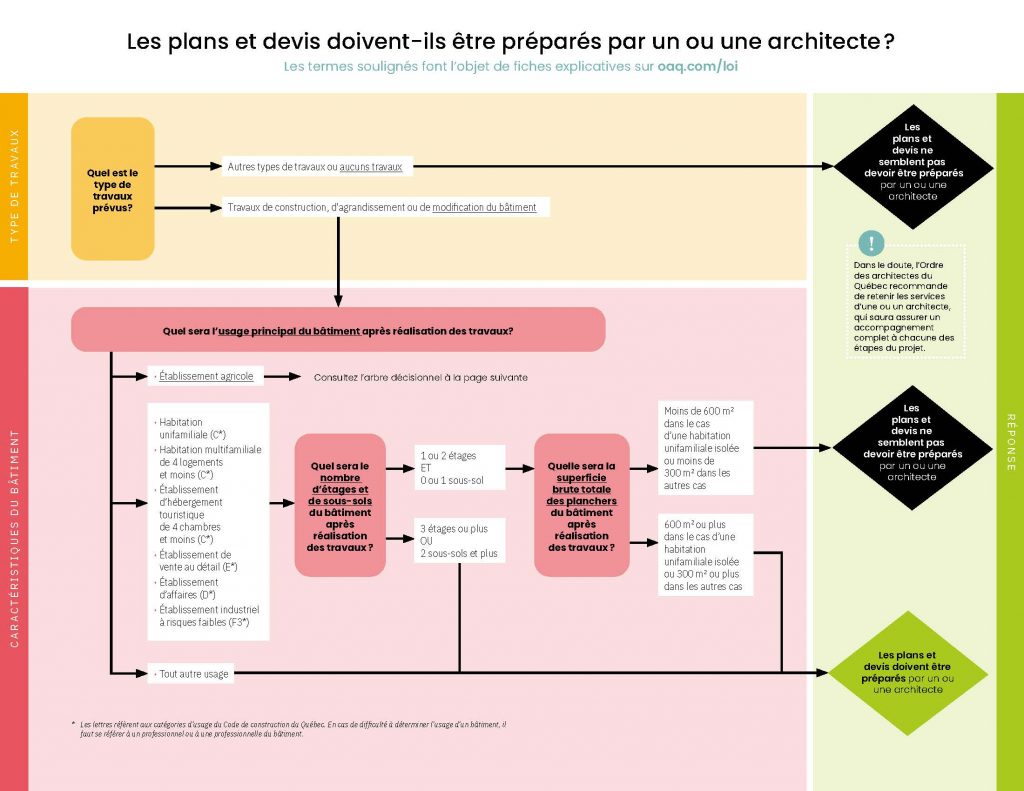Explications with sources:
PERMIT PLANS AND CONSTRUCTION PLANS
By definition, permit plans aim for a specific objective: obtaining the permit! For this reason, they do not have to be detailed to the point of allowing the complete and compliant execution of the work, as is the case with construction plans. However, it happens that they are used wrongly in the context of work.
Let’s take the example of a developer or builder client who comes to your office. He needs to obtain a building permit for his condominium building project. He wishes to mandate you to prepare plans for this purpose, but refuses to pay for the preparation of construction plans and for the supervision of the work. You therefore suspect that your permit plans will be used for construction. What are you doing?
As soon as the contract is signed, you must absolutely warn your client against the use of permit plans during construction work and explain the risks associated with it. This is your obligation to advise as an architect. We suggest using the following wording:
«We understand that you intend to proceed with the construction of the building on the basis of the plans that we issued for the purposes of obtaining the building permit. We must emphasize to you that this use of our plans is inappropriate and could cause significant damage. We obviously cannot be held responsible for such damage. We strongly suggest that you have plans prepared for construction.»
In addition, the plans you provide should be marked: «Plans for permit only. Do not use for construction.»
REUSE OF PLANS
Some clients, notably school boards, have been issuing calls for tenders for some time to acquire plans and specifications that have already been used for the construction of schools.
We also see contracts providing for fees for the reuse of plans for the construction of additional units based on the original concept (repetition fees).
The following situation speaks for itself: a client who owns several properties has entrusted you with a mandate to design ski chalets. You then exercised partial supervision of the work, which was carried out by a local contractor. Your agreement provides for the payment of repeat fees for additional units.
The client informs you that he has decided to build other units, leaving it to the contractor to revise certain constructive principles. He specifies that you will have no mandate in this regard, not even supervision of the work, but offers to pay you the repetition fees to which he believes he is required. What about your responsibility, considering that the new units will be largely inspired by the initial plans?
It is clear that your liability could extend to these new units to the extent that damage results from the initial concept. Although your liability is limited to this aspect, it is necessary to outline the applicable liability regime. The following clause could be used in a letter to your client:
«You have entrusted Contractor X with a mandate to construct new chalet units based on the concept that we initially defined. We understand that the contractor benefits from a certain latitude regarding the concept and construction principles. We cannot be held responsible for damages likely to result from choices made by the contractor to the extent that they differ from the initial concept, even if repetition fees are paid to us.»
In addition, you should include appropriate reservations as to general conditions and existing conditions (including ground conditions).
Keep in mind that when it comes to plans, caution is required!
OAQ
